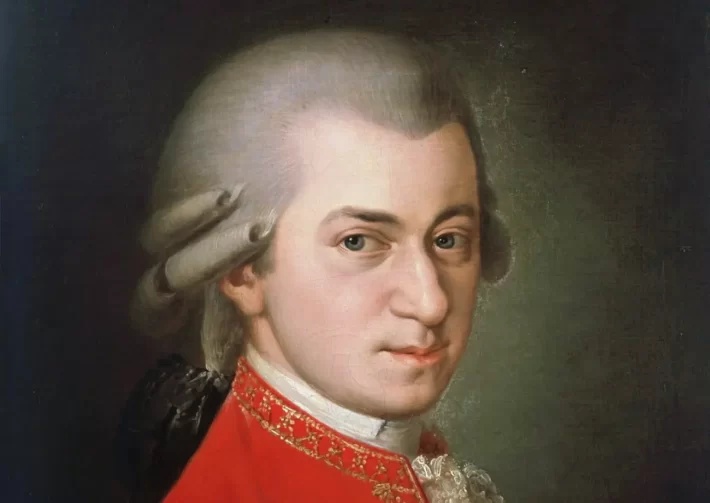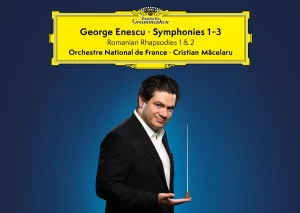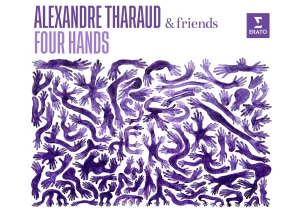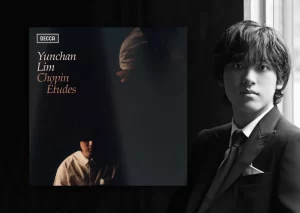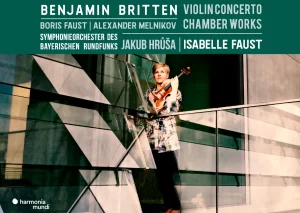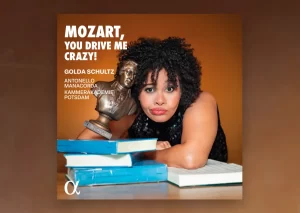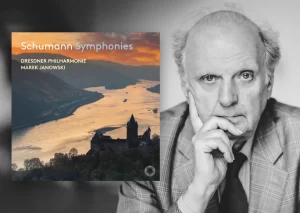Wolfgang Amadeus Mozart’s compositions are celebrated for their clarity, balance, and elegance, making them a cornerstone of the classical style. However, Mozart’s genius extended beyond mere beauty. While admired for his melodies and harmonies, his music was also seen as complex and innovative for his time. He experimented with chromaticism, dissonance, and counterpoint in ways that pushed the boundaries of what was considered conventional. This very complexity, along with his incredible melodic gift, is a big part of what makes his music so enduring and popular today.
This beginner’s guide to the music of Mozart will recommend 10 best pieces one can start with, along with recordings recommendations.
Serenade No. 13 (“Eine Kleine Nacht-Musik”)
One of the most famous pieces of classical music of all time, a tune that many can whistle without even knowing the name of the piece or the composer. The original version was composed for a string quartet with an optional enforcement of a double base, but is heard many times played by a full string orchestra.
Neville Mrriner has a lifetime experience in conducting this famous of classical music pieces, and his players of the “Academy of St Martin in the Fields” are at their absolute best in this “Double Phillips” issue.
Piano Concerto No. 21, K.467 (“Elvira Madigan)
All of almost all of Mozart’s piano concertos, especially from No. 20 onwards, are masterpieces, but it’s safe to say that Mozart has never got it better in this genre. The second movement is the most famous of all of Mozart’s concerto movements, and was featured in the Swedish film “Elvira Madigan”, what gave it it’s nickname.
Maria João Pires, and Chamber Orchestra of Europe and Claudio Abbado are a perfect match in this difficult concerto, and their performance on DG remains one of the best.
Le nozze di Figaro (“The Marriage of Figaro”)
This famous and successful Opera was Mozart’s real big success, most notably a after few major performances in Prague. Mozart was a born singer’s composer, and the blend of drama, comedy, orchestral accompaniment and arias makes this one of the composer’s best compositions.
If you are intimidated by plunging directly to a full length opera, there are many “highlights” versions available, and they are a good place to start. René Jacobs version, with period instruments and a line of star soloist is so fascinating from start to finish, you will find yourself not i need of any shortening of the entire piece. This album also include impressive performances of Mozart other two masterpieces “Don Giovanni” and “Così fan tutte”.
Symphony No. 40 in G Minor, K.550
Another “big hit” among music lovers, this dark but temperamental piece is a good place to start when entering the world of Mozart symphonic output. Contrary to other forms, the composer struggled with the Symphony form, and mostly his later symphonies (No. 38 onward) are considered truly masterful works. The Symphony No. 40 is usually coupled with Symphony No. 41 (“Jupiter”), another masterpiece that the listener can continue to explore after getting to know its predecessor.
Nikolaus Harnoncourt recorded this Symphony few times, on period and modern instruments, but he has never done better than this version with the Concertgebouw Orchestra.
Requiem in D Minor, K.626
One of Mozart’s absolutely last pieces, this unfinished work took hold of listeners ears and many storytellers’ imagination. In all likelihood composed after a commission by a wealthy connoisseur (that used to take credit for other composer’s works), Mozart treats this classic “death mass” text like no other composer before him. Mozart favorite pupil, Franz Xaver Süssmayr, completed the score, adding orchestral parts and even complete movements, the extent of which is still debatable. In any case, this is a piece any “Mozart beginner” should explore.
Neville Marriner, once again, proves he is a master Mozart interpreter, and this famous version appeared as part of the big hit movie, “Amadeus”.
Piano Sonata in A Major, K.331 (“Alla Turca”)
Not in a “classical sonata form”, this well-loved piano sonata is most famous because if its third movement, also referred to as “the Turkish March”. The sonata is virtuosic, colourful and explores the instrument of the time to its maximum limits. The first movement is one of the best theme and variations movements Mozart ever produced, the middle section is almost acrobatic in its virtuosity, without failing in giving unique nuances from the piano.
In a recent addition to the catalog, Peter Donohoe presents one of the most satisfying accounts of the “Alla Turca” Sonata in recent memory, and a great place to start when wanting to know this lovely piece. This is part of Donohoe’s ongoing cycle of the complete Piano Sonatas by Mozart.
Violin Concerto No. 5 in A Major, K.219 (“The Turkish”)
Another A Major piece, another “Turkish” nickname, given for the third and last movement. This early concerto, written when Mozart was still in Salzburg, is uplifting from first note to last, and the best Violin concerto Mozart wrote. Other than a later concerto for a duo of violin and viola (“Sinfonia Concertante”), it’s also his last.
Issabelle Faust, Il Giardino Armonico and Giovanni Antonini gives an uplifting, magical performance of all of Mozart’s Violin Concertos, with a release that won the Gramophone Magazine “Record Of The Year” award for 2017.
Serenade No. 10 in B Major, K.361 (“Gran Partita”)
This is Mozart at his most imaginative, giving 12 wind players and 1 double bass some of his best ideas and orchestration. This piece is a world in itself, giving advanced and beginner listeners a lifetime of enjoyment.
The conductor-less Orpheus Orchestra is practically made for this music, and their animated version is spontaneous, free-sounding as any.
Clarinet Concerto in A Major, K.622
Mozart wrote this Concerto well into his final year. It’s a mature, serious piece, that is orchestrated relatively lightly, but compensates with some of the most moving of all of Mozart music.
Alfred Prinz, the principal clarinetist of the Vienna Philharmonic gives a calm, almost serene account of this late Concerto, with Karl Bohm and the Vienna Philharmonic at their best glorious sound.
String Quartet in B Flat Major, K.458 (“hunt”)
One of the six masterful string quartets dedicated to Josef Haydn. From all of the six, the “Hunt” is the best place to start. If you want to go further, any one of the other quartets in the series is a masterpiece, but the most famous is the “Dissonance”, K.465 and the D Minor String Quartet, K.421.
For a great performance of the “hunt” quartet, along with the rest of Mozart string quartets, look no further than the Alban Berg Quartet, in their perfectly executed and now budget-priced version.

Included with an Apple Music subscription:
Latest Classical Music Posts
Read more classical music reviews or visit The Classic Review Amazon store
Follow Us and Comment:
Get our periodic classical music newsletter with our recent reviews, news and beginners guides.
We respect your privacy.

